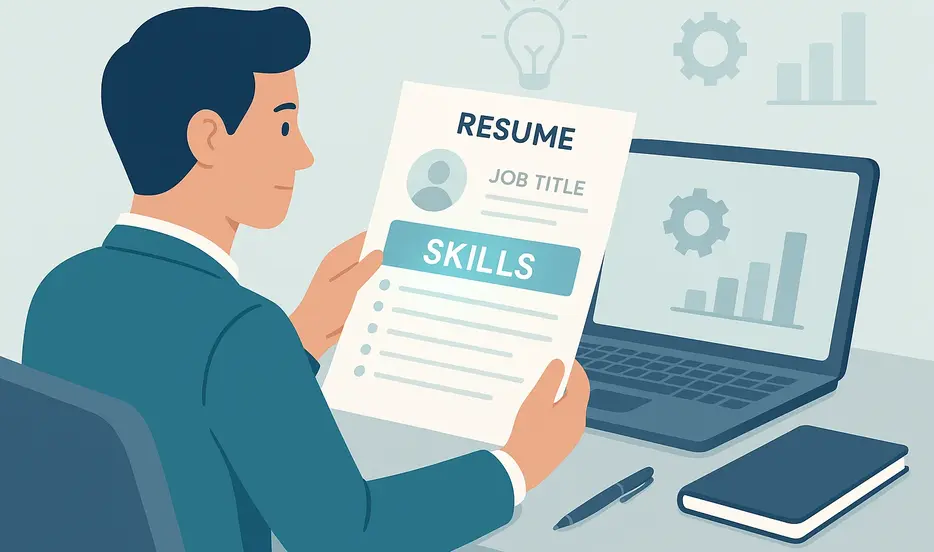In a world where career paths are nonlinear and job titles can be misleading, the traditional resume is undergoing a transformation. In 2025, more employers are embracing skills-based hiring, focusing on what candidates can do rather than the titles they’ve held.
Enter the skills-first resume—a modern approach to presenting your qualifications in a way that aligns with how companies now evaluate talent.
Why Skills Matter More Than Job Titles in 2025
Job titles vary wildly across companies. A “Project Manager” at a startup might wear five hats, while at a large enterprise, the same title could involve narrow administrative duties. This inconsistency makes job titles an unreliable way to evaluate talent.
Employers in 2025 are shifting to:
- Skills-first assessments (via platforms like LinkedIn, Rezi, and Teal HQ)
- Project portfolios over rigid job histories
- AI-driven talent matching based on capabilities, not credentials
What Is a Skills-First Resume?
A skills-first resume highlights core competencies, tools, and accomplishments ahead of chronological job experience. It may feature:
- A featured “Core Skills” or “Areas of Expertise” section
- Skill-themed work experience bullets
- Optional project-based portfolios
- Keywords aligned with job description requirements
This format is ideal for:
- Career changers
- Freelancers and gig workers
- Self-taught professionals
- People with gaps in traditional experience
Skills-First Resume vs Traditional Resume
| Feature | Traditional Resume | Skills-First Resume |
|---|---|---|
| Emphasis | Job titles & dates | Skills & outcomes |
| Format | Chronological | Functional or hybrid |
| Best for | Linear career paths | Career pivots, gig economy, remote roles |
| Common issue | Title mismatch with skill set | Clear evidence of capability |
How to Structure a Skills-First Resume
1. Start With a Skills-Based Summary
Example:
“Multidisciplinary professional with expertise in UX design, user research, and Figma prototyping. Proven track record of leading remote teams to deliver high-impact design solutions for SaaS startups.”
2. Use a Core Skills Section
List 8–12 technical and transferable skills.
Example:
- UI/UX Design
- Figma, Adobe XD
- Agile Collaboration
- Usability Testing
- Front-End Development (HTML/CSS)
- A/B Testing
- Remote Team Leadership
3. Group Experience by Skill Category
Example Format:
UX Design Projects
- Redesigned onboarding flow for mobile app, increasing user retention by 22%
- Conducted usability tests with 50+ users to inform feature prioritization
Team Leadership
- Led remote design sprints across 3 time zones
- Mentored 2 junior designers into mid-level roles
Client Collaboration
- Worked with 8+ B2B clients to translate business goals into wireframes and prototypes
4. Include Projects or Portfolios
Where applicable, link to GitHub, Behance, Notion portfolios, or live work samples.
5. Optional: Short Work History Section
List job titles and dates in brief at the end for context.
Example:
Freelance UX Designer | Various Clients | 2021–2025
Product Designer | Startup XYZ | 2019–2021
Tips for Writing a Great Skills-First Resume
- Use action verbs and measurable results
- Tailor skills to the job description (use tools like Jobscan)
- Avoid vague phrases (“hard-working,” “fast learner”)
- Prioritize impact over responsibility
Who Should Use a Skills-First Resume?
This format is especially useful for:
- Career changers breaking into a new field
- Tech professionals with non-traditional backgrounds
- Remote workers with hybrid gigs
- Freelancers with diverse project history
- People transitioning from education or military service
Final Thoughts
In 2025, the resume landscape is evolving. As more employers embrace skills-based hiring, job seekers who lead with capabilities over credentials will have a clear edge.
Whether you’re changing careers, freelancing, or simply want to stand out, a skills-first resume might be your best bet for landing interviews in the modern market.
FAQs About Skills-First Resumes
Q1: Is a skills-first resume ATS-friendly?
Yes, as long as you format it cleanly with standard section headings and include job-relevant keywords. Avoid graphics or columns that may confuse ATS systems.
Q2: Should I still include dates and job titles?
Yes, but they can be listed in a simplified section at the end. The focus should remain on your capabilities and results.
Q3: What if I have limited formal work experience?
A skills-first resume is ideal in this case. You can highlight coursework, freelance projects, internships, or personal projects to show relevant abilities.
Q4: How do I know which skills to prioritize?
Use the job description as your guide. Match your resume to the most frequently mentioned tools, skills, and action verbs.






